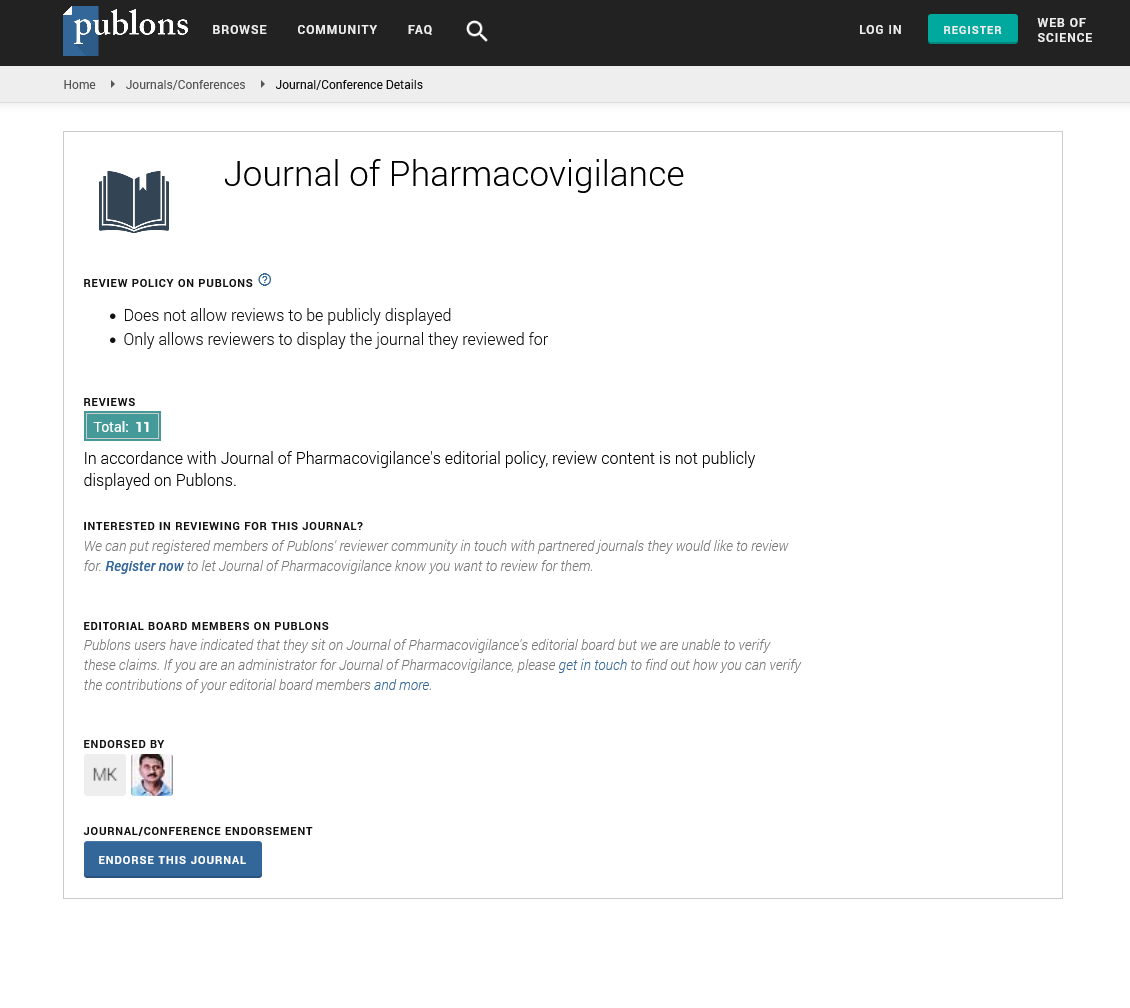Indexed In
- Open J Gate
- JournalTOCs
- The Global Impact Factor (GIF)
- RefSeek
- Hamdard University
- EBSCO A-Z
- OCLC- WorldCat
- Publons
- Euro Pub
- Google Scholar
Useful Links
Share This Page
Journal Flyer

Open Access Journals
- Agri and Aquaculture
- Biochemistry
- Bioinformatics & Systems Biology
- Business & Management
- Chemistry
- Clinical Sciences
- Engineering
- Food & Nutrition
- General Science
- Genetics & Molecular Biology
- Immunology & Microbiology
- Medical Sciences
- Neuroscience & Psychology
- Nursing & Health Care
- Pharmaceutical Sciences
Commentary - (2022) Volume 10, Issue 9
Patterns of Adverse Drug Reactions in Both Adults and Children
Ming Xu*Received: 16-Aug-2022, Manuscript No. JP-22-18419; Editor assigned: 19-Aug-2022, Pre QC No. JP-22-18419(PQ); Reviewed: 02-Sep-2022, QC No. JP-22-18419; Revised: 09-Sep-2022, Manuscript No. JP-22-18419(R); Published: 16-Sep-2022, DOI: 10.35248/2329-6887.22.10.393
Description
Adverse Drug Reactions (ADRs) are the unintended unwanted effects of drugs used to prevent, diagnose, or treat disease. Incidence statistics vary greatly depending on the method used to obtain the data and the type of population studied. However, estimates range from 2% to 7% of hospitalized patients.
The economic cost of these ADRs to society is also difficult to accurately estimate, but recent studies estimate that they cost adults alone $75 billion to $180 billion annually. Compare this aspect of pharmacology to healthcare compared to the cost of treating diseases such as diabetes ($45 billion), cardiovascular disease ($120-150 billion) and cancer ($130-195 billion). Another way to show the impact of ADR is to recognize that approximately 5% of all hospital admissions were a direct result of her ADR, and unfortunately the incidence has not changed over the past 30 years.
In general, side effects are most likely to occur soon after starting drug treatment or increasing the dose. Long-term use may cause other side effects. A patient's doctor can monitor these reactions to help prevent them from occurring (for example, blood tests with warfarin). If we keep taking the medicine, some side effects will go away. However, if we have any concerns, we should consult the doctor or pharmacist. Do not change medications or stop taking medications without first talking to the doctor or pharmacist.
Serious reactions include reactions that can be life-threatening (such as liver failure, cardiac arrhythmias, and certain types of allergic reactions), reactions that result in permanent or significant disability or hospitalization, and reactions that cause birth defects. Severe reactions are relatively rare. People who have a severe reaction usually stop using the drug and need treatment. However, doctors may need to continue taking highrisk drugs (eg: chemotherapy for cancer patients or immunosuppressants for organ transplants). Doctors will use whatever means possible to control serious side effects.
One of the challenges in describing ADR in children is the rapid development that alters anatomy and physiology. Diseases common in children differ from those in adults, and symptoms of diseases common to both childhood and adulthood may differ. The most drastic changes in pharmacokinetics occur during the first year of life. By 1 year of age, body weight triples and body surface area doubles. The relative proportions of fat, water and protein also change rapidly during infancy. During the first year of life, Total Body Water (TBW) decreases from 80% to 65%. A decrease in TBW percentage leads to an increase in body fat percentage, which almost triples by the age of one year. In contrast, protein content does not begin to increase significantly until the second year of life, when infants are able to walk.
Serious side effects are adverse medical events, regardless of dose, such as:
1. Life-threatening hospitalization required or prolonged
2. Medical or surgical intervention required preventing permanent impairment of bodily function or permanent damage to body structures
3. Congenital anomaly or
4. A medical event considered serious if it does not respond to prompt treatment
The most common cutaneous drug eruptions are usually in the form of pruritus, maculopapular rash, urticaria, angioedema, phototoxic and photoallergic reactions, fixative drug reactions, vesicular bullous reactions, and exfoliative lesions will appear in these symptoms clinically resemble allergic reactions and are considered drug hypersensitivity reactions.
Citation: Xu M (2022) Patterns of Adverse Drug Reactions in Both Adults and Children. J Pharmacovigil. 10:393.
Copyright: © 2022 Xu M. This is an open-access article distributed under the terms of the Creative Commons Attribution License, which permits unrestricted use, distribution, and reproduction in any medium, provided the original author and source are credited.

